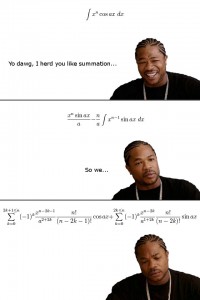There’s a conceit that if you add two variables, that the product will always equal a third predictable variable.
In business, this is simply not true. If you take variable A, and add it to Variable B, then the two produce a by-product while simultaneously creating a feedback loop on each other and mutating the by-product.
Here’s what I mean
In the world of A+B=C
Bigger Clients + Bigger Profits = higher salaries/benefits for all
In the world of A impacts B, which impacts each other to mutate C.
Bigger Clients + Bigger Profits = a re-investment of profits towards hiring more staff and equipment which in turn generate creates the infrastructure to support Bigger Clients and stable base where profits can be made or lost. Initially, the ramp-up might actually be LESS profitable. It’s a calculated risk – one that if made correctly MAY lead to a by-product of increased overall employee compensation.
But the heavy difference between the two is the understanding that business is behavioral more than mechanical. And because it’s behavioral, there’s a level of unpredictability that we call “risk.” A+B can’t equal C because that equation is assuming that C is a predictable outcome. A+B = a % chance of C occurring and likely that other unknown variables will occur.
Moreover…….your variables don’t stay the same
Let’s say A = an employee. B = a project
A + B = $7,000 in profits
Well, the employee changes. He/She gets experience, has life challenges, becomes bored, becomes passionate, etc
So……….
A + B could equal…..$2,000 in profits. or -$8,000 or $12,000 in profits
In the end, business is more art than science. Using scientific/mathematic equations as the foundation of business-management doesn’t work, although they’re effective as tools for tracking progress. Hopefully we’re getting more people who realize that they’re dealing with a fluid art-form when they’re dealing with businesses.

